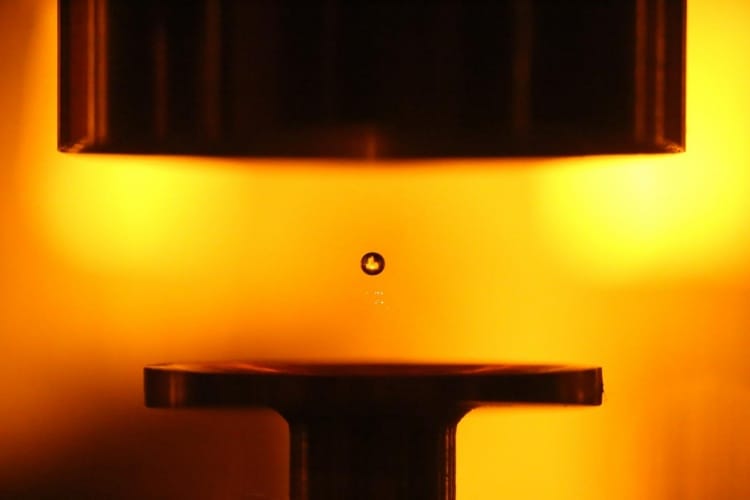Ultrasonic levitation helps detect water contamination
Mexican researchers have used ultrasonic levitation to suspend droplets of water in the air and perform spectral analysis to detect contamination.

(Cedit: Jairo Peralta and Victor Contreras, Instituto de Ciencias Físicas UNAM)
Laser induced breakdown spectroscopy (LIBS) is commonly employed to identify what chemicals are present in a particular sample of a substance. While this is a straightforward process with solids, it is more difficult with liquids, as the plasma created by the laser pulse lasts such a short time, making the chemical fingerprint hard to detect. Typically, samples of water have to be sent to laboratories where high-powered, non-portable lasers perform the task.
Using sound waves, the researchers suspended a single droplet of water that allowed them to detect very low concentrations of heavy metals using LIBS. In their paper, published in the journal Optics Letters, they detected 0.7mg/L of cadmium and 0.2mg/L of barium. It’s hoped that the work will form the basis of a portable or handheld device that can perform vital water analysis on-site.
Register now to continue reading
Thanks for visiting The Engineer. You’ve now reached your monthly limit of news stories. Register for free to unlock unlimited access to all of our news coverage, as well as premium content including opinion, in-depth features and special reports.
Benefits of registering
-
In-depth insights and coverage of key emerging trends
-
Unrestricted access to special reports throughout the year
-
Daily technology news delivered straight to your inbox










Water Sector Talent Exodus Could Cripple The Sector
Maybe if things are essential for the running of a country and we want to pay a fair price we should be running these utilities on a not for profit...